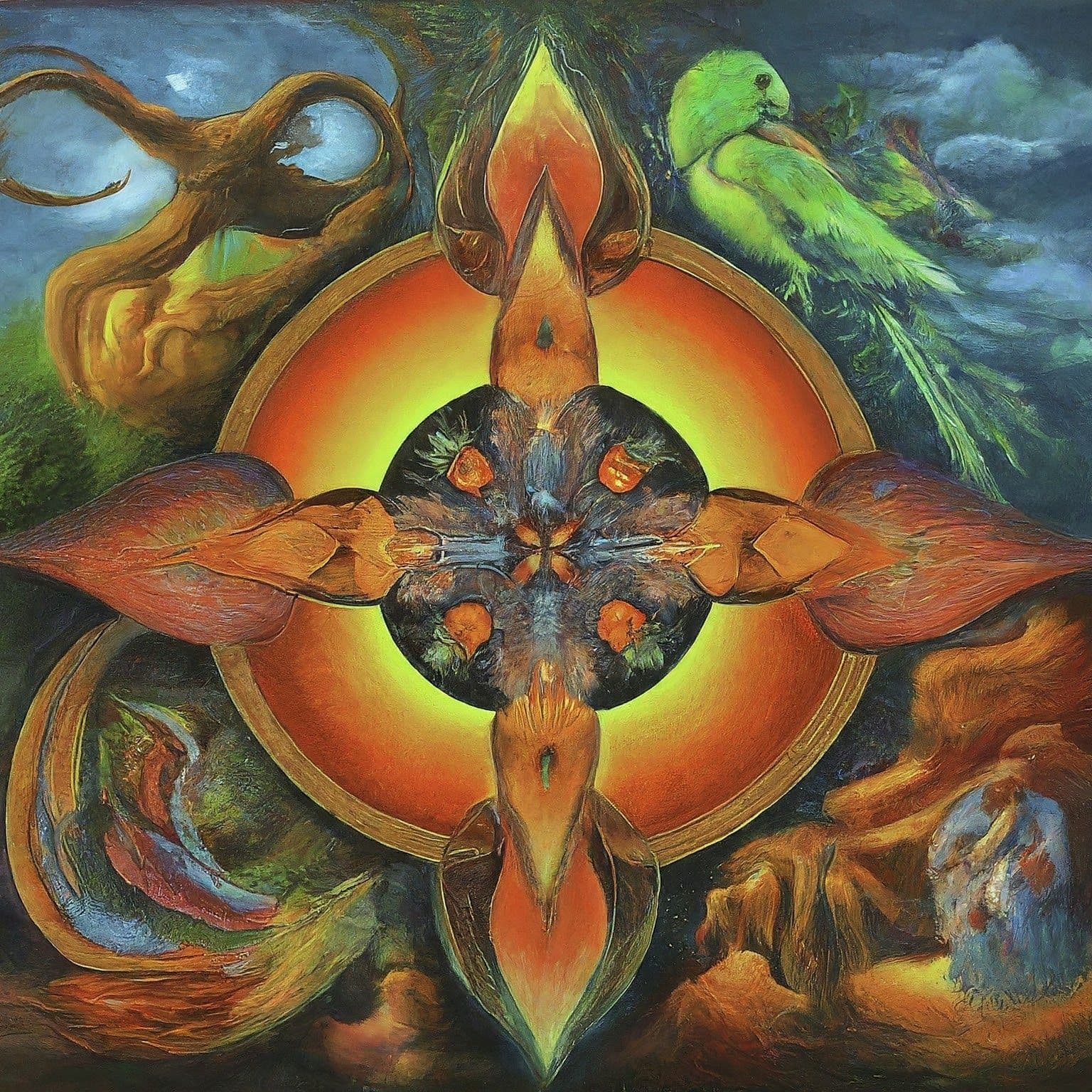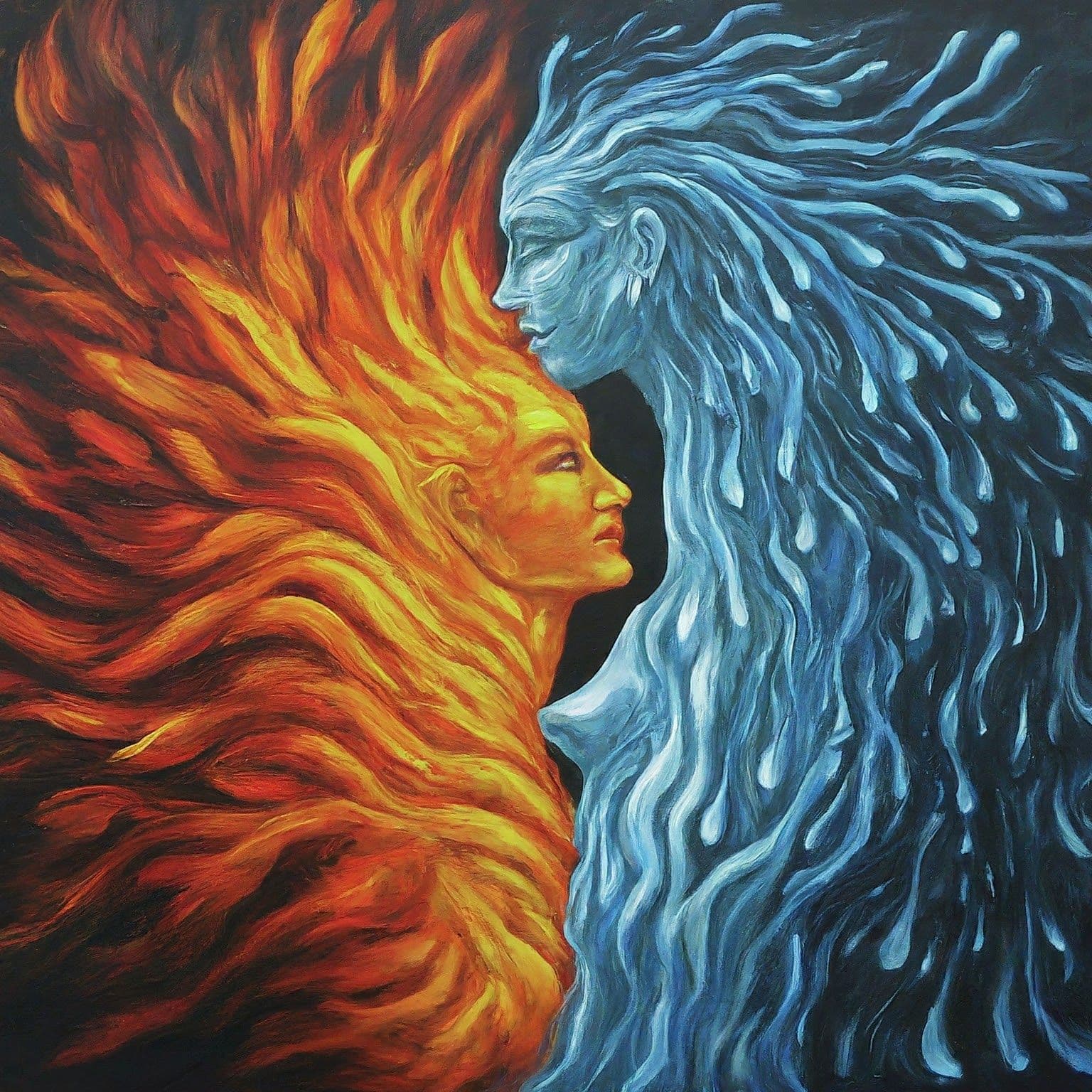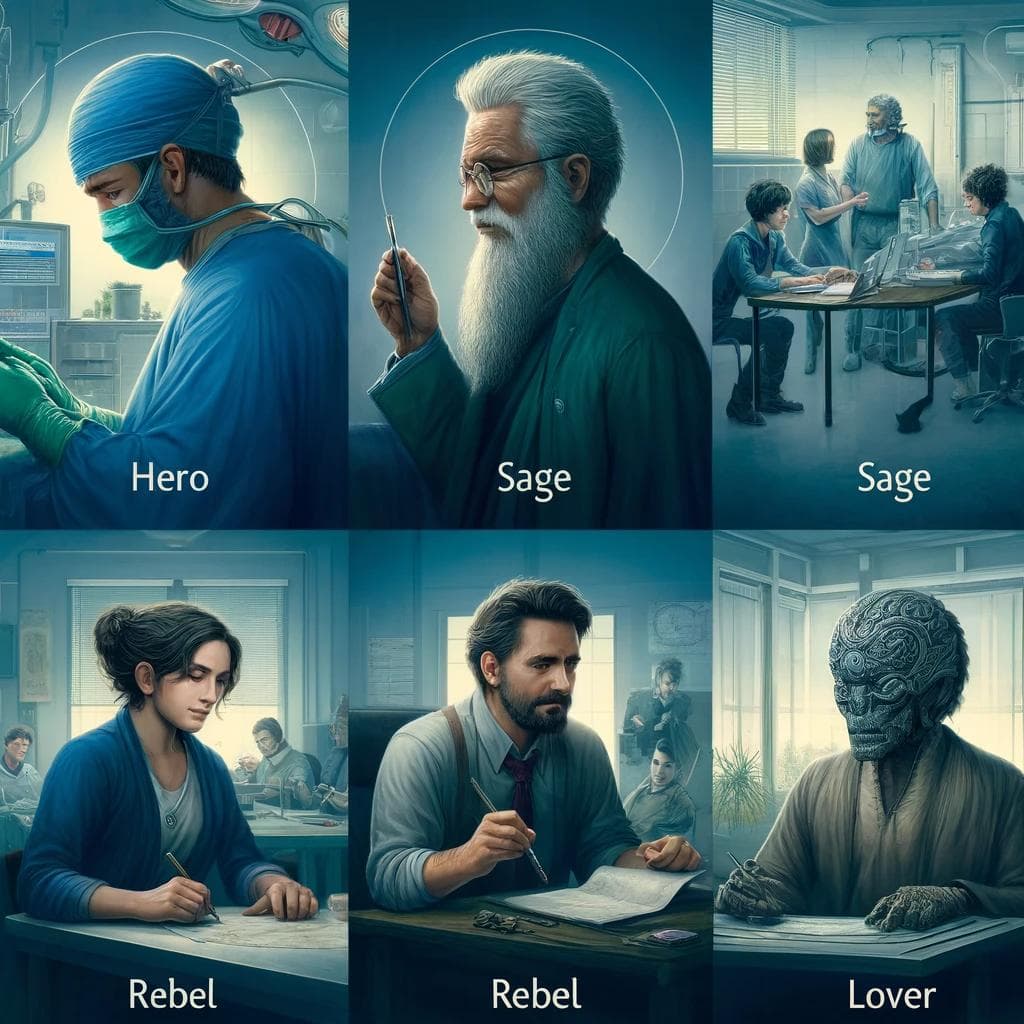What Are Archetypes – And How To Understand Yourself Better With Them
Patterns and Theories Across The Globe
The natural world is simply full of patterns, and if we learn to notice these patterns, we can expect them to continue. The songbirds would always chirp around the same time each day. The annual wildflowers would blossom in spring and wither during autumn every year. The moon would take a month to wax and wane every time.
We can also see patterns within our own minds, and in how we relate to others. They explain the ways we think, the ways we act, and the reasons why we do things.
Many psychologists have analysed them over the ages, coming up with their own theories on how we make sense of them – and a notable field where we can see their efforts can be found in the ever-expanding study of personality psychology.
This easily opens up a new can of worms where we may use these to find more about ourselves through the usage of multiple personality tests – such as Rorschach’s inkblots, sixteen personalities, big five, enneagrams, socionics, temperaments, Hogwarts houses, which classical element are you on a Playbuzz quiz, what ice cream flavour are you on Buzzfeed... and the list goes on.
But for now – allow us to focus on only one theory, from a certain Swiss psychiatrist who has made multiple famous contributions to the area of personality.

Who is Carl Jung?
Carl Jung (pronounced “yoong”) is a psychologist renowned for his work in the study of the mind to the point where any psychology student would have at least heard the name once in their classes, and they may have also heard of his history working with Freud (which in the end didn’t work out too well).
Now, Carl Jung was most famous for the following key points listed below:
Introversion vs. Extraversion: Jung is the first psychologist to identify and draw a line between two separate personality types: introverts and extroverts. Introverts refer to those who are more withdrawn and prefer to spend time by themselves, while extroverts refer to those who are more outgoing and prefer to spend time hanging out with other people. Later, he also proposed the four functions of a mind: thinking, feeling, sensing, and intuition – which later does provide the basis for the MBTI to be developed.
Analytical psychology: Also known as “Jungian analysis,” this is the term Jung decided to give to his own form of psychotherapy – where he closely studies the concept of a “collective unconsciousness” (meaning a common reservoir of symbols) and its relationship with the unconscious mind of an individual. In other words, it is built on his belief that the unconscious mind is a source of wisdom and guidance that could help people attain ultimate psychological growth.

And more importantly:
What are Archetypes, and Why are They Important?
Jung’s definition of archetypes are patterns that represent ancient wisdom among humans. He has also said that the collective unconscious explains why, for many people, spiritual concerns are deeply rooted as well as why people in different cultures may share certain myths and images. He believes that the archetypes stem from the collective unconscious, that they’re already natural, universal, and within ourselves from the beginning. In fact, Jung even rejected the concept of “tabula rasa” (the theory that the human mind is a blank slate at birth to be written on with experiences), saying that this couldn’t be the case because the human mind retains “primordial images” – which are necessary unconscious instructions on how to be human.
Archetypes are responsible for symbolising human values, personalities, and motivations. Every archetype does exist within everyone, though we tend to express them in different manners. The way an archetype is expressed depends on many factors, including an individual’s background information as well as their personal experiences.
By understanding the archetypes, Jung wholeheartedly believed that individuals could gain more insight into their personalities from the world around them.
While Jung is convinced that there is no limit to the number that may exist, he has only managed to identify four major ones. We may not be able to observe them directly, but we can deduce their presence in the forms of many religions, dreams, and artistic mediums.
The Persona, for Jung, was the face that the individual would show to the world in forms of social context and daily interactions. The term has originated from an Etruscan word meaning “mask,” so the “masks” we wear in public create a certain social image about ourselves, whether that means a student, artisan, psychologist, et cetera. While the term does seem excessive in implying that this is a personality that is just pure fiction – we can usually see this in celebrities in multiple forms of media. In today’s world, social media has also allowed us to craft different personas to appeal to different audiences.
And in terms of child development, children learn that they must behave in certain ways in order to conform to society’s rules and expectations. The persona then develops as a social mask to hide urges, emotions, and behaviours that would not be perceived as socially acceptable.
The persona may assist in helping the individual adapt and fit into the society they live in. However, identifying with this archetype too closely may cause one to lose sight of themselves.
The Shadow came into existence when Jung theorised that all individuals have a light side and a dark side. As you may guess, the dark side (the shadow) is what we choose to repress – whether that consists of weaknesses, hidden desires, or instincts.
The shadow often does not correspond with the ego ideal, often causing the persona to take over instead. It forms out of any failed attempts to conform to societal expectations, as well as any morals, beliefs, or values that conflict with their ideal selves. Examples of this may include envy, hate, aggression, hubris, or literally any other flaw you can think of from the top of your head.
Any biases and prejudices do stem from our shadow, which can arise unconsciously without any prior warning.
According to Jung, the shadow can also manifest itself in dreams as entities often associated with malevolence (think: dragons, snakes, monsters, or the sleep paralysis demon hiding in a corner of your bedroom).
This is an archetype present in all of us, though Jung believed that individuals may make all kinds of attempts to avoid confronting their shadow. They may try to suppress it. They may try to deny it. They may even sometimes project their shadow onto other people.
At the same time, the shadow is necessary. After all, the ultimate goal of a shadow is to integrate the persona and itself with the mindset of a person so they can learn to comfortably control themselves in tough situations.
The Anima is the unconscious feminine side of a masculine individual, and the Animus is the unconscious masculine side of a feminine individual – with both terms defining the human soul. Or to put it in different words: it refers to the inner soul that animates us. It also represents the “true self” instead of the image we project to society, and serves as a reliable bridge of communication from one individual to the collective unconscious.

Taking into consideration that our culture, our experiences, and our upbringing are the factors that shape our worldview, Jung proposed that those factors also present an image of the ideal man or woman to us. He also thought that since many cultures tend to encourage people to adopt traditional gender roles, the discouragement of men from exploring their feminine side and women from checking out their masculine side could actually hamper their psychological development.
The anima and animus also play a role in influencing an individual’s actions and attitudes towards the opposite sex. We can’t exactly interact directly with them because they are parts of the unconscious. So we tend to be aware of their presence through projections: we project the inner qualities of our anima/animus onto other real people and then act as if those people are our projections. Another way to be aware of them would have to be through dreams and our active imagination. Through those two factors, we can have an active relationship with this archetype as it slowly integrates itself within our conscious lives by bringing contents of the unconscious to the front, making us less prone to their unconscious influence.
Combined, the anima and animus are known as the “syzygy,” or the “divine couple” – which is a pretty fancy term for unification and balance between two opposing forces.
The anima and animus may not come out and show themselves. However, we’d be off balance without their existence.
The Self is the archetype that occurs when the ego unifies itself with the conscious and unconscious states of an individual. Jung has the tendency to draw the self as a circle, a square, or a mandala.
It is also responsible for representing Jungian individuation, which consists of unique experiences throughout an individual’s life as well as integration of various parts of one’s personality. Disharmony would occur if there is an imbalance between the unconscious and conscious mind, which could potentially be fixed by bringing and attuning the conflict into the forefront of the conscious awareness.
And Jung believed that there are two places within the psyche where personality is developed: the ego and the self.
Think of this archetype as a hollow circle with a dot in the centre. The central dot would be the ego, where it can be seen as the centre of all consciousness. Meanwhile, the hollow circle would be the self, representing a combination of all consciousness, unconsciousness, and the ego.
By way of explanation, self is the underlying oneness of everything. It is everything human life has been, is currently, and will be. And it is the part of your mind that contains everything. Everything inward and outward that your psyche can experience. If your individual psyche interacts with something, then it is a part of your self.
A Very Brief Summary of The Twelve Archetypal Figures
Building on the four archetypes we’ve discussed earlier, Jung figured that they can combine to each other and create the concepts of the twelve archetypal figures (or archetypal images). And to give proper definitions to them, Jung has delved deep into studying mythology and symbols of different cultures before assigning them names. These words define common traits that we all have. Here’s a quick look at each archetype:
Innocent: The innocent likes to see the good side in everything, and is always searching for happiness with a unique sense of childlike wonder. Within storytelling, characters with this archetype tend to serve as a moral compass, often learning to balance their idealistic view of the world with a more realistic understanding while maintaining their hope.
(Example: Pandora, whose innocence and curiosity causes her to open the box and unknowingly unleash pain and suffering onto the world)
Sage: The sage’s goal in life is to discover and try to understand the world. They strongly value knowledge and wisdom, and tend to use their power to guide, advise, and help the people around them.
(Example: Tiresias from Sophocles’s Oedipus Rex, a blind prophet with the gift of prophecy who advises and interprets prophecies from the Oracle of Delphi.)
Explorer: The explorer is simply a free spirit, desiring the freedom to discover themselves while exploring the world around them. They also do have a deep love for finding new places and seeking experiences to escape from boredom.
(Example: Odysseus, a hero who sets out on a long and dangerous journey home after the events of the Trojan War because Poseidon hates him for blinding his son.)

Outlaw: The outlaw (also known as the rebel) seeks to break and reinvent rules that aren’t working for the benefit of society. This tends to cause chaos around them to achieve their desire for a better future.
(Example: A classic example of this archetype would be Robin Hood, as he’s well-known for stealing from the rich to give to the poor.)
Magician: Charming and constantly changing with a dream to make things happen, the magician likes filling their brains with psychological tactics to influence people to be their friend. They also adore working hard to make their grandest visions become a reality.
(Example: Merlin, a prominent magician in the legends of King Arthur who serves as a counsel to several kings including the titular character.)
Hero: The hero is interested in fighting for the greater good (though the concept “good” would be subjectively defined in their minds), and they’ll do anything to avoid losing through the power of not giving up. They wish to be as strong, brave, and competent as they can.
(Example: Rama, who’s considered to be one of the greatest heroes of Hindu mythology. He’s renowned for his bravery and devotion, and also faces off against a demon king in the epic Ramayama.)
Lover: What is life without the feelings of passion or devotion? Basically, the lover loves the feeling of love and pleasure and also wants to shower that onto other people. The lover also has a gifted sense of sensuality and creativity, which is best expressed through art in any form.
(Example: Would anyone be surprised if I named Aphrodite, goddess of love and beauty, as my example? Her alluring beauty is a constant source of inspiration for artists. Not to mention her many affairs with gods and mortals alike, which capture the desire for pleasure well.)
Jester: The jester perfectly understands the statement of only living once, desiring to live in the moment and possibly plotting silly jokes for the simple reason of fun. Even in the most dire of situations, the jester would still be able to find a way to make others crack a smile.
(Example: Hermes is literally the herald of thieves and trickery. His birth into the world even has him stealing from Apollo’s sacred cattle and lying about it to his face!)
Everyman: This is an archetype that is designed to represent a reader within a story. The everyman (also known as the common person or member) will do everything they can to fit in within their society and value tradition and safety. They also tend to be friendly, polite, and inviting of others.
(Example: Baucis and Philemon are a regular humble couple who are also the only ones to treat disguised gods Zeus and Hermes with hospitality and generosity and let them stay the night in their home… which later spared their lives when Zeus decides to destroy the rest of the town.)
Caregiver: The caregiver sees altruism to be very important and desires to protect those around them. They tend to be very selfless and generous in their actions, with the wish to protect and care for others.
(Example: Though it is rather ironic considering she has thrown her son Hephaestus off Mount Olympus for having a crippled foot, Hera does fit the bill pretty well since she’s the goddess of families, childbirth, and marriage.)

Ruler: The ruler is the classic definition of a leader, desiring to create order within the world and be in total control of their lives. They also like striving for excellence, having everyone follow their lead, and usually have great reasons for their followers to do so.
(Example: It kind of goes without saying that Zeus fits the bill perfectly here. He’s the supreme deity of the Greek Pantheon, after all.)
Creator: The creator (or artist) loves expressing their thoughts and feelings through mediums and creating artefacts of enduring value. They also adore developing artistic skill to express their own visions and imagination.
(Example: Apollo is the Greek god of healing, medicine, archery, music, the Sun, and is also the leader of the Muses – who are the goddesses of the arts. So he’s typically associated with the creative arts and the concept of recreation.)

How Can You Use Archetypes to Understand Psychology?
Like any common theory in psychology, whether it’s Freudian or Jungian or otherwise, realising what is going on may have the ability to help you change for the better or free you from any misconceptions. For this topic, Jungian archetypes are basically structures and patterns we’ve all encountered and related to in real life and in fictional media. And being able to inspect and understand the structures and patterns can help you understand yourself a lot better. While trying to identify the archetype itself isn’t necessary, they can be used as a framework for analysing multiple ideas and emotions within one’s mind in a very analytical manner.
Jungian archetypes and archetypal figures are essentially the user interface of human consciousness, because their images and motifs are the expressed form of what should be inarticulate patterns within one’s personality hidden within their unconscious that are commonly found everywhere around us, such as the ancient myths and folklores in classical books.
By seeing parts of your personality and thoughts as archetypes, you may discover that it will become a lot easier to sort through your goals. And when you discover the archetypes you’re already playing and identify the ones you want to be like, then you have created a rather convenient and concrete path for yourself to frame your steps to modify any thoughts, behaviours, and actions for the better. Ultimately, knowing yourself is an empowering and important step to living authentically – in your self-expression and connection to others.
In addition to the very important psychological benefit of figuring oneself out, we must remember that archetypes are collective. In other words, they represent the way humans have imagined shared biological responses around the world. As a result, an understanding of archetypes allows one to better interact with other people, whether that takes place through various art mediums, a heightened sense of empathy, or just hanging out with them. You could have a better social life from just applying them to your everyday life!
But why not take things a step further? If you desire to truly understand yourself deeper with the usage of archetypes, you could always start today with the support of one of our therapists at An Elegant Mind. Book a free 20-minute consultation to explore how these timeless patterns can illuminate your personal story, guide your growth, and help you live with greater clarity and authenticity. Your archetypal journey begins the moment you choose to look within.

